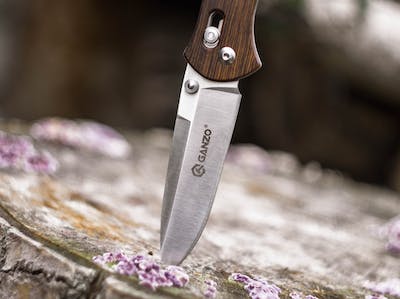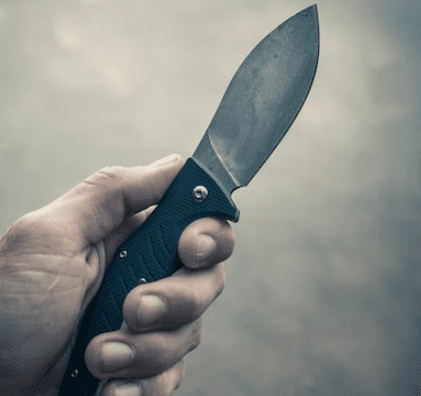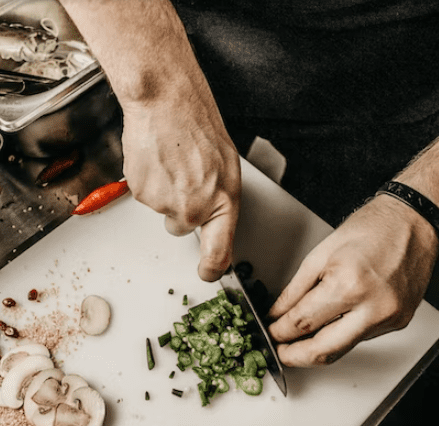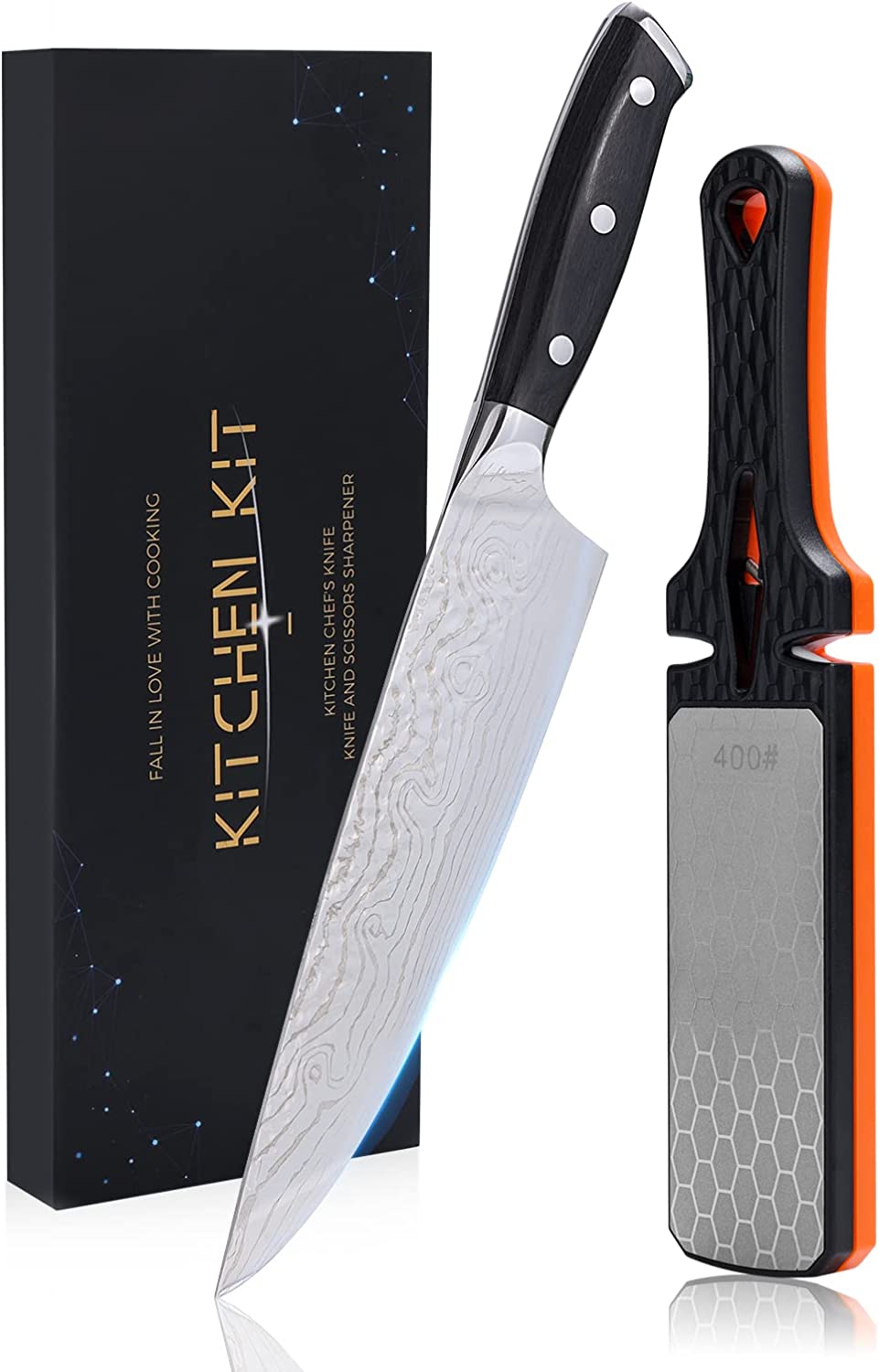How to Safely Use a Knife: Definitive Guide

Knives are an essential tool in many aspects of our daily lives, from food preparation to woodworking and crafting. However, their sharp blades and pointed tips can pose significant dangers if not handled properly. Accidents involving knives can cause serious injuries, such as deep cuts, lacerations, and puncture wounds, which may require medical attention.
Therefore, it’s crucial to understand how to safely use a knife, and practice knife safety when using any type of knife, whether it’s a chef’s knife in the kitchen or a utility knife in a workshop. This article will provide tips on how to safely use a knife to avoid accidents and ensure a successful outcome.
1st Choose the Right Knife
Before using a knife, it’s essential to prepare the workspace and the knife itself to ensure safe and effective use.
✅First, ensure that the work surface is clean, stable, and dry. Avoid working on slippery or unstable surfaces, such as a wet countertop or a cutting board that moves around. This can cause the knife to slip, potentially resulting in injury.
✅Second, check the blade for any signs of damage or dullness. A damaged or dull blade can cause accidents, as it requires more force to cut through materials and can slip or deflect off the surface being cut. Sharpen the blade if necessary or replace it if it’s damaged beyond repair.
✅Finally, secure the food or materials being cut by holding them in place with your non-dominant hand or using a clamp or a vise. This prevents the materials from moving around and reduces the risk of injury.
Prepare for Use
Before using a knife, it’s essential to prepare the workspace and the knife itself to ensure safe and effective use.
First, ensure that the work surface is clean, stable, and dry. Avoid working on slippery or unstable surfaces, such as a wet countertop or a cutting board that moves around. This can cause the knife to slip, potentially resulting in injury.
Second, check the blade for any signs of damage or dullness. A damaged or dull blade can cause accidents, as it requires more force to cut through materials and can slip or deflect off the surface being cut. Sharpen the blade if necessary or replace it if it’s damaged beyond repair.
Finally, secure the food or materials being cut by holding them in place with your non-dominant hand or using a clamp or a vise. This prevents the materials from moving around and reduces the risk of injury.
Proper Technique
Proper technique is crucial for safe and efficient use of a knife. Follow these guidelines to ensure proper technique:
1️⃣Grip the knife correctly: Hold the handle of the knife firmly with your dominant hand, placing your thumb and forefinger on the handle’s sides and the remaining fingers around the handle’s base.
2️⃣Use a controlled slicing motion: Use a smooth and controlled slicing motion, using the full length of the blade. Avoid using a sawing or chopping motion, as this can cause the blade to slip or damage the material being cut.
3️⃣Keep fingers and other body parts clear of the blade: Keep your non-dominant hand and fingers away from the blade’s path to prevent accidental cuts. Use a claw grip to hold the food or material being cut, tucking your fingers and knuckles away from the blade and using your fingertips to guide the knife.


Cleaning and Storage
Proper knife cleaning and storage are essential for maintaining the longevity of your knives and ensuring they remain safe to use. After using a knife, it is important to clean it thoroughly to remove any leftover food particles or debris. To clean a knife, use warm water and soap, and gently scrub the blade with a soft sponge or cloth. Avoid using abrasive cleaners or scrubbers, as these can damage the blade or handle.
Once the knife is clean, dry it completely with a soft cloth. It is important to ensure that the knife is completely dry before storing it, as any moisture left on the blade or handle can lead to rust or other damage. To store a knife safely, place it in a knife block or on a magnetic strip, or wrap it in a sheath or protective cover. Avoid storing knives loose in a drawer, as this can damage the blade and pose a safety hazard.
Proper knife cleaning and storage are crucial for maintaining the quality and safety of your knives. By following these simple guidelines, you can ensure that your knives remain in top condition and ready to use whenever you need them.
Additional Tips and Tricks
In addition to cleaning and storage, there are a few additional tips and tricks to keep in mind for safe and effective knife handling.
💡Firstly, always use a cutting board when working with knives. This not only helps to protect your countertop or work surface from damage but also prevents the knife from slipping and potentially causing injury. When choosing a cutting board, opt for one made of durable materials such as wood, bamboo or plastic, and make sure it is large enough to accommodate the size of the knife you are using.
💡Secondly, it is important to avoid distractions when working with knives. This means focusing your attention on the task at hand and avoiding multitasking or other activities that may cause you to become distracted. Using a knife requires concentration and precision, so it is important to eliminate any potential distractions that could compromise your safety.
💡Lastly, always keep knives out of reach of children. Knives are sharp and potentially dangerous tools, so it is important to store them in a safe and secure location where children cannot access them. If you have young children at home, consider storing your knives in a locked cabinet or drawer, or keeping them on a high shelf that is out of reach.
By following these additional tips and tricks, you can help ensure safe and effective knife handling, and reduce the risk of accidents and injuries.
Frequently Asked Questions About How to Safely Use a Knife
How should I hold a knife properly?
To hold a knife properly, grip the handle firmly with your dominant hand, ensuring that your thumb and index finger are gripping the base of the blade. Wrap your remaining three fingers around the handle for stability. This grip allows for better control and reduces the risk of the knife slipping from your hand. Remember to always keep your fingers away from the sharp edge of the blade.
How can I prevent accidents while cutting?
To prevent accidents while cutting, it is crucial to use a cutting board that is stable and secure. Place a damp cloth or a non-slip mat underneath the cutting board to prevent it from sliding. Additionally, make sure the blade of the knife is sharp. A dull blade requires more force to cut, increasing the chances of the knife slipping. Lastly, always pay attention to what you are doing and avoid distractions while using a knife.
Should I use a cutting glove?
While not necessary for everyone, a cutting glove can provide an added layer of protection. Cutting gloves are typically made of materials like Kevlar or stainless steel mesh, which offer resistance against cuts. If you are new to using knives or feel unsure about your knife skills, wearing a cutting glove can give you peace of mind and protect your hands from accidental cuts.
How should I clean and store my knives?
After using a knife, it is important to clean it promptly and properly. Hand wash your knife with warm water and mild dish soap, avoiding harsh abrasives that can damage the blade. Dry the knife thoroughly before storing it. To prevent accidents, store your knives in a knife block or on a magnetic strip where they are easily accessible but out of reach of children. Avoid storing knives loosely in a drawer, as this increases the risk of accidental cuts when reaching for them.
How often should I sharpen my knives?
The frequency of sharpening your knives depends on how often you use them. As a general rule, it is recommended to sharpen your knives every 6-12 months, or when you notice a significant decrease in their cutting performance. Regular honing with a honing steel can also help maintain the sharpness of the blade between sharpenings. If you are unsure about sharpening your knives yourself, it is best to seek the assistance of a professional knife sharpener.
Conclusion
In conclusion, knife safety is of utmost importance when it comes to working with knives. Using a knife improperly or without proper safety precautions can result in serious injury or accidents. To ensure safe knife handling, it is essential to keep the knife clean and properly stored, use a cutting board, avoid distractions, and keep knives out of reach of children.
It is important to remember that knife safety is a responsibility that falls on everyone who uses knives, whether it be in a professional or personal setting. By following the guidelines outlined in this text and practicing safe knife handling techniques, we can minimize the risk of accidents and ensure safe and effective use of this important tool. Let’s make knife safety a priority and encourage others to do the same.

